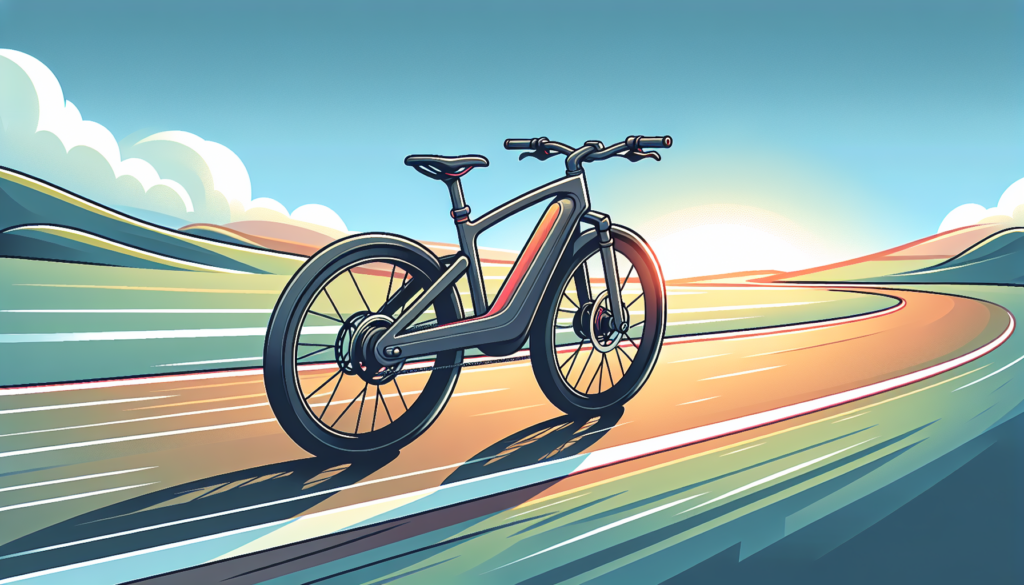
When it comes to electric bikes, ease of maintenance is a crucial factor for many riders. The Xiaomi Ebike Himo Z20 and the ADO A20 Lite are two popular options on the market, each offering unique features that cater to different needs. The Xiaomi Ebike Himo Z20, with its robust design and dual electrical assist modes, is a reliable choice for those seeking versatility on their rides.
On the other hand, the ADO A20 Lite from EKO Life MY stands out with its lightweight frame, three electrical assist modes, and a belt system that promises smoother rides and potentially easier upkeep. In this blog, we will delve into the maintenance requirements of both models, helping you determine whether these electric bikes are easy to maintain on your own.
Understanding the Basics of Ebike Maintenance
When it comes to maintaining your electric bike, understanding the basics is crucial for ensuring longevity and optimal performance. The Xiaomi Ebike Himo Z20 features a chain system and mechanical disc brakes, which may require regular lubrication and adjustments to maintain smooth operation. With its considerable weight of 21.6kg, handling maintenance tasks may be more challenging for some users, but with the right tools and knowledge, owners can easily perform essential upkeep. The dual electrical assist mode further enhances the riding experience, but it’s important to check battery health to maximize the 60km range provided by the 36V 10Ah Li-ion battery. Regular tire pressure checks and brake adjustments should also be part of your routine maintenance to ensure safety.
On the other hand, the ADO A20 Lite stands out for its lightweight design at just 16kg, making it easier for owners to handle. It offers three electrical assist modes, adding versatility to your rides but also necessitating attentive battery care to maintain the same 60km range offered by its 36V 9.6Ah Li-ion battery. Its belt system requires less maintenance than a chain, as belts are less prone to wear and do not need oiling. Mechanical disc brakes also need occasional checks to ensure a smooth braking experience. Therefore, those looking for an easier maintenance experience might find the ADO A20 Lite more appealing due to its lighter weight and more forgiving components.
Battery Care: Xiaomi Ebike vs ADO A20 Lite
Battery care is a crucial aspect of maintaining electric bikes, and both the Xiaomi Ebike Himo Z20 and ADO A20 Lite offer solid performance in this domain. The Xiaomi Ebike features a 36V 10Ah Li-ion battery, providing a decent range of about 60km, ideal for urban commuting. Given its dual electrical assist modes, riders can easily adjust their settings to optimize battery usage. Moreover, the battery’s placement is designed for straightforward access, allowing users to remove and charge it conveniently at home. Users should regularly check for any signs of wear and ensure that connections remain clean and secure, which is crucial for maximizing the battery’s lifespan and performance.
In contrast, the ADO A20 Lite boasts a slightly smaller 36V 9.6Ah Li-ion battery with the same range of around 60km. What sets the ADO A20 Lite apart is its three electrical assist modes, which can help users engage the battery intelligently and prolong its longevity. This model is also notably lighter at 16kg, making it easier to handle, especially when removing the battery for maintenance. Regular maintenance practices such as ensuring the battery is charged correctly and monitoring the health of the battery can significantly enhance performance. Overall, both bikes require minimal intervention for battery care, but the ADO A20 Lite‘s user-friendly design might provide a smoother DIY experience.
Assessing the Chain vs Belt System for Maintenance
When it comes to maintenance, the chain system of the Xiaomi Ebike Himo Z20 requires regular attention to ensure smooth operation. Chains can accumulate dirt and grime, necessitating periodic lubrication and cleaning to prevent rust and wear. Additionally, chain tension must be checked and adjusted to maintain optimal performance, which can be a bit cumbersome for those new to bike maintenance.
However, with the right tools and a little know-how, the chain system can be managed reasonably well by DIY enthusiasts. The Xiaomi Ebike Himo Z20’s dual electrical assist modes provide flexibility for users, but this means more components to care for, which could pose a challenge in maintenance. In contrast, the ADO A20 Lite features a belt system that is generally touted for being more low-maintenance compared to chains.
The belt is less susceptible to wear and does not require lubrication, making it easier to manage for those who prefer a straightforward upkeep routine. With three electrical assist modes, the ADO A20 Lite offers versatility alongside a lightweight design, weighing only 16kg, which also facilitates DIY maintenance. While both models have their merits, the ADO A20 Lite stands out for its simplified maintenance needs, making it an enticing option for tech-savvy riders looking for a hassle-free experience.
Braking System Comparison and Maintenance Tips
When evaluating the braking systems of the Xiaomi Ebike Himo Z20 and the ADO A20 Lite, it’s essential to consider the differences in their setups. The Xiaomi Ebike Himo Z20 features mechanical disc brakes, which generally offer reliable stopping power in various weather conditions. Maintenance typically involves checking the brake pads for wear, adjusting the brake cables, and ensuring the rotors are straight. Owners can comfortably perform these tasks with basic tools, making the Xiaomi Ebike a viable option for those who prefer hands-on maintenance. Moreover, the dual electrical assist modes in the Xiaomi Ebike Himo Z20 can also enhance your riding experience while ensuring safety during braking.
On the other hand, the ADO A20 Lite also utilizes mechanical disc brakes but is considerably lighter, weighing just 16kg. This may influence the braking response and overall riding dynamics. Owners will find maintenance similar to that of the Xiaomi Ebike Himo Z20; however, the ADO model comes equipped with advanced three electrical assist modes, providing versatility during rides. This feature might encourage a more frequent usage of the brakes, thus prompting more regular checks. Nonetheless, both bikes ensure that maintenance is manageable for users, allowing for a DIY approach that helps in prolonging the lifespan of the braking systems.
Weight Considerations and Ease of Handling
When it comes to DIY maintenance, weight plays a significant role in handling and maneuverability, especially for electric bikes. The Xiaomi Ebike Himo Z20 weighs in at 21.6kg, which may pose a challenge for some riders when performing repairs or maintenance tasks. Its chain system, while reliable, requires specific tools for adjustments and cleaning, adding to the complexity of at-home upkeep. However, its dual electrical assist modes offer versatile riding options that can make the weight feel more manageable during use. Riders will need to consider the extra weight if they plan on frequently transporting or lifting the bike for maintenance.
On the other hand, the ADO A20 Lite is notably lighter at 16kg, making it a more attractive option for those intending to perform their own upkeep. The belt system of the ADO A20 Lite also provides an advantage in terms of maintenance simplicity, as it generally requires less frequent adjustments compared to chain systems. Since both bikes share a similar range of approximately 60km, potential owners should weigh these factors carefully. The ADO A20 Lite not only offers ease of handling due to its lighter weight but may also provide a smoother, more straightforward maintenance experience overall.
Electrical Assist Modes: Impact on Maintenance

The Xiaomi Ebike Himo Z20 and ADO A20 Lite both offer unique electrical assist modes, which can impact maintenance requirements. The Xiaomi Ebike Himo Z20 features a Dual electrical assist mode, allowing riders to choose between Dynamic Sports Mode and Cool Mode. While these modes enhance the riding experience, the dual assists may require more attention during maintenance, particularly when it comes to the electrical system and battery management. Riders who frequently switch modes might need to ensure optimal battery performance and check for wear and tear on the electric components more regularly, making DIY maintenance a bit more challenging for the Xiaomi Ebike Himo Z20.
On the other hand, the ADO A20 Lite boasts a simplified approach with its 3 electrical assist modes. This versatility still provides an enjoyable riding experience while potentially simplifying maintenance tasks. As the ADO A20 Lite weighs less at 16kg and employs a belt system, it may also require less frequent adjustments compared to the Himo’s chain system. Moreover, the belt system can lead to less wear and lower maintenance needs in terms of replacements. Overall, for those inclined towards easier DIY maintenance, the ADO A20 Lite appears to be a more user-friendly option for electric bike enthusiasts.
Cost of Upkeep: Evaluating Value for Money
When it comes to evaluating the cost of upkeep for the Xiaomi Ebike Himo Z20 and the ADO A20 Lite, both models demonstrate an excellent balance between performance and maintenance requirements. The Xiaomi Ebike, priced at RM 3,099, boasts a robust 36V 10Ah Li-ion battery that provides a range of up to 60 km, making it an appealing choice for those looking for a reliable and durable option.
It features a dual electrical assist mode and a sturdy chain system, which, while needing some routine checks, is often easier to maintain. With an acceptable weight of 21.6kg and a max load of 100kg, it has a fairly reasonable upkeep cost, considering its performance capabilities and durability. However, DIY maintenance can be slightly more challenging due to its chain system, as users may require basic knowledge to address any potential issues.
On the other hand, the ADO A20 Lite stands out with its relatively lower price of RM 3,699 and its unique features such as a belt system, which generally requires less maintenance and keeps the overall upkeep cost down. Also equipped with a 36V 9.6Ah Li-ion battery that mirrors the Xiaomi Ebike’s 60 km range, the ADO A20 Lite weighs only 16kg, making it lighter and potentially more user-friendly for DIY maintenance. The mechanical disc brakes, coupled with three electric assist modes, cater to various riding preferences and elevate its appeal. Overall, while both options are competitively priced and efficient, the ADO A20 Lite emerges as a more user-friendly option for those who prioritize ease of maintenance.
User-Friendly Features for DIY Maintenance
When it comes to DIY maintenance, both the Xiaomi Ebike Himo Z20 and the ADO A20 Lite offer user-friendly features that cater to cyclists who prefer to handle their own repairs and upkeep. The Xiaomi Ebike Himo Z20, with its dual electrical assist modes and a reliable mechanical disc brake system, allows users to easily address common mechanical issues. Its chain system permits straightforward adjustments and lubrication, making it accessible for novice bike enthusiasts who want to ensure their ride remains in top condition. The maximum weight capacity of 100kg, combined with a reasonably lightweight design of 21.6kg, also adds to the ease of handling and performing maintenance tasks independently.
On the other hand, the ADO A20 Lite stands out with its 3 electrical assist modes, providing versatility while simplifying the maintenance process. Weighing just 16kg, it is significantly lighter than the Xiaomi model, which can be beneficial when it comes to maneuvering for repairs. The ADO A20 Lite utilizes a belt system instead of a chain, which typically requires less frequent adjustments and maintenance, appealing to users looking for a more hassle-free experience.
Its mechanical disc brakes also simplify the upkeep, making it easier for unwary riders to keep their ADO A20 Lite in peak condition. With a similar battery range of about 60km and a maximum load limit of 100kg, the ADO A20 Lite combines ease of use with reliable performance, delivering an excellent option for those inclined towards DIY maintenance.
Final Thoughts on DIY Maintenance for Electric Bikes

When considering the ease of maintenance for electric bikes like the Xiaomi Ebike Himo Z20 and the ADO A20 Lite, it’s clear that both options have their perks. The Xiaomi Ebike Himo Z20 offers a solid build with mechanical disc brakes and a more traditional chain system, which can appeal to those familiar with standard bicycle maintenance. However, its slightly heavier weight of 21.6kg may make lifting and maneuvering for maintenance a bit more cumbersome for some riders. The battery life and performance are outstanding, especially with the dual electric assist modes available, making it a competitive choice for long journeys.
On the other hand, the ADO A20 Lite shines in terms of lightweight design at just 16kg, combined with its belt system that generally requires less frequent adjustments than chain systems. This makes the ADO A20 Lite a more user-friendly option for those looking to engage in DIY maintenance. The 3 electric assist modes cater to varying performance needs, while the price point offers great value for its features. Ultimately, both electric bikes are designed to provide a balanced blend of performance and ease of maintenance, but the ADO A20 Lite stands out for those who prioritize lighter weight and lower upkeep in their riding experience.

It’s interesting to see how the author connects the dots in this blog post.
Thank you, Kalyan Shum, for your thought-provoking comment. We’re glad you found our blog post interesting. If you have any questions or feedback regarding our bicycle, ebike, and escooter products or services, please feel free to reach out to us at [email protected] or +60 3-7890 3042.
However, with great insight comes great responsibility, and I hope the article encourages readers to use their knowledge for the greater good.
Great point, Melvyn! We couldn’t agree more. At Eko Life Malaysia, our goal is to empower cyclists to promote sustainable transportation, which we believe is a vital step towards a better future for our community. Thank you for adding depth to this conversation.
I couldn’t agree more, this is a thought-provoking article that opens my eyes
Thank you, Nurul Adeline! We’re thrilled to hear that our article had a positive impact on you. If you have any further thoughts or questions, please feel free to share them with us. You can also contact us directly at [email protected] or +60 3-7890 3042.